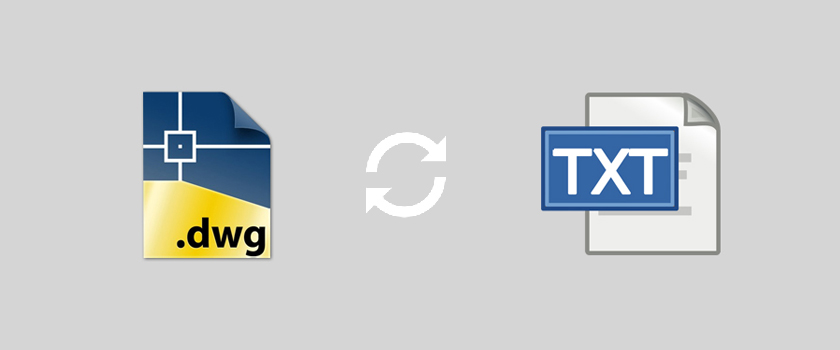Do you know what separates man from animals? It is language. Birds and animals make sounds. The apes use different sounds and gestures to communicate. To your surprise, despite their sounds and gestures, they cannot communicate like human beings. Languages started developing on the earth in homo sapiens back 30,000 and 100,000 years ago.
In this globalized world, we cannot live alone. We need the assistance of each other. People from different cultures of the world speak different languages. When these people mingle, they share their cultural norms and values resulting in the formation of new languages.
When new languages develop, old languages start to become extinct. Languages depict the civilization of different nations. Everything in the world keeps on evolving, the same is the case with languages. Therefore some languages evolve and some disappear.
The question might come to your mind that languages are an important part of civilization but why do they die? Let’s find out the reasons. These reasons are cultural, economic, and political.
For example, if you speak a language that is not spoken much in the world then you might teach your children to speak English. This is because English is a global international language and your child's career and economic growth are associated with it.
For example, the vast majority of second-generation immigrants to the United States do not speak their parents’ languages fluently. It is economically and culturally more beneficial to speak English. In the same way, if we look at second-generation immigrants in the USA, they don’t speak the language of their ancestors and prefer to speak English to get economical benefits.
Languages also evolve and get extinct because of migration. When we dig out the history then we would come to know that Proto-Indo-Europeans migrated to many parts of Asia and Europe some 8000 and 6000 years ago.
They brought with them many language changes and resulted in the extinction of many languages. The only language that survived in Western Europe is Basque among Indo-European languages.
The Indo-European world was introduced by Franz Bopp of Germany in 1816. According to him, these languages are from Europe and some parts of Asia. The countries that are included in Asia are Pakistan, Afghanistan, Iran, Northern India, and Bangladesh. Languages spoken in these countries are mutually associated with each other.
The languages like Hittite, Latin, Greek, Sanskrit, Gothic, Old Prussian, Bulgarian, old Irish, and many other languages share the specifications of European languages. Moreover, languages spoken in the area of Pakistan, Afghanistan, India, and Bangladesh are a part of Indo-European languages.
It is believed that Indo-European is evolving from Proto-Indo-European languages. Do you know that Proto-Indo-European languages have no writing system? Therefore, they have not spoken anymore and there is no evidence to support it.
Indo-European languages came into existence from a different number of branches like Anatolian, Celtics, Indo-Iranian, Germanic, Balto Slavic, Greek, Armenian and Tocharian
The Basque and Euskara are the oldest languages of Western Europe. This language is not related to any other language in the world and it has a unique composition. Moreover, it is not related to French and Spanish, or any other Romance language.
Although it has taken some loanwords from them. The best part of this language is that it survived on its own for centuries. The anthropologist is still confused about its origin; it is a mystery for them.
Basque has announced the co-official language of Basque which was a country of Spain in 1979. Basque is part of both Spain and France and it is the hometown of the Basque people. This oldest European language is native to a whopping 750,000 people. Many linguists believe that the Basque language is from the period of prehistoric Europe.
It might surprise you that Lithuanian is the oldest surviving Indo-European language. Lithuanian belongs to the branch of Baltic languages. The history of written Lithuanian dates back to the 16 century. In the pool of European languages, only this language has the privilege of saving a greater number of structural characters of the source languages.
Unlike the Greek language, it has preserved the long and short vowel sounds at the end of the words. Moreover, it emphasizes characters like the Sanskrit language. Lithuanian is mutually intelligible with ancient Greek, Latin, and Sanskrit. It became the official language of Lithuania in 1918. It contains 32 letters and is native to 3 million speakers around the globe.
Lithuanian became the official language of the European Union in 2014. This language fascinates the world’s linguists because of its complexity and beauty.
Did you know that Irish Gaelic is a Celtic language of Ireland and it originated from Indo-European languages? However when it is called Gaelic only then it depicts the language spoken in Ireland and Scotland. The other Celtic languages that have similar roots are Scottish, Gaelic, Manx, Breton, Welsh, Breton, and Cornish.
The history of Irish Gaelic is from the 4th century. Moreover, it was considered one of the oldest vernacular kinds of literature in Western Europe. The other parts of Europe speak languages that are written in Latin.
However, the Irish people decided to write in their format. Because of political and cultural issues, the demand for Irish Gaelic is declining from the previous century. There were around 1.76 million Irish-speaking people around the world. Out of this number, only 1.7% of them use it in their daily conversation.
Icelandic is one of the West Nordic languages. According to Viking times, from 800 to 1050 AD. This language is recognized as the Norse language that is spoken in West and East Norse and Scandinavian countries. In Norway, West Norse was spoken and in Sweden and Denmark, East Norse was spoken.
Many people from Sogn, Hordaland Fjords, and mostly from Norway came to occupy Norway. Moreover, some people also came from Celtic and Nordic origins. However, people from the Celtic region did not play any part in the development of this language.
The development of this language started when the Norse man came to settle there. Initially the Icelandic and Norwegian were Norse dialects and old testaments show that there was a little difference between them.
The difference started appearing in the 13th century and the 14th-century difference became noticeable and they were considered a separate language. The Icelandic language that is spoken before is entirely different from that which was spoken 20 years ago.
The Greek language is native to Greece and Cyprus. It is one of the oldest languages of Europe and people have been speaking this language since 1450 years before Christ. It is from the family of a Hellenic branch.
Moreover, it is considered one of the official languages of Europe. Hence people living in Ukraine, Hungary, Albania, Turkey, Romania, Australia, and Italy also speak this language to a little extent. At present, the Greek language is native to 13 million people.
The oldest language in Europe is Finnish. It is from the group of the Finno-Ugric language family. Finnish is one of the ancient languages of Europe. Its history dates back from 1500-1000 BC. Did you know that the Birchbark letter 292 from the 13th century is the oldest written document in the Finnish language? Moreover, Finnish is the official language of Europe and it is also the minority language of Sweden. In 1955, it became the official language of the European Union.
Did you know that Persian is also included in the list of old Indo-European languages? However, it is also a branch of Indo-Iranian languages. It is spoken in the main parts of Afghanistan, Iran, and Tajikistan. The dialect of the Persian language that is spoken today is developed from old Persian that was spoken in 800 CE with little changes.
Sanskrit is one of the official languages of India and its historical roots are in Europe. Moreover, it is a 4000 years old language. It is from the family of the Indo-Aryan branch. The first written record of Sanskrit was written in the 2nd millennium BCE. Furthermore, it possesses the oldest literature in the world.
These were some of Europe's ancient languages. We cannot deny the importance of these old languages. By knowing their evolution and history, we can be intact with the norms and cultures of our forefathers.

dwg: It means a drawing file save format created by AutoCAD, and now has been the standard format of 2D
Read More
Mars Translation can help you extract the texts in a DWG file and convert them into a Word file so
Read More
dwg: It means a drawing file save format created by AutoCAD, and now has been the standard format of 2D
Read More
dwg: It means a drawing file save format created by AutoCAD, and now has been the standard format of 2D
Read More
AutoCAD blocks A block is an object that combines one or more single entity object. Operated as an individual complete object,
Read More
What is a file formate A file format is a standard way that information is encoded for storage in a computer
Read More
Software 1. AutoCAD 2015 - English 2. PDF virtual printer, such as Adobe Acrobat, PDF factory, or CutePDF. Step-by-Step 1. Open the CAD file,
Read More
Plot style table is used to control the color, line width and other effects. In the layer manager, every layer
Read More
The following layers can't be deleted: 1. Layer 0 and Layer Defpoints that are default layers. 2. The current active layer. To
Read More


Document Translation
Professional document translation by native expertsApp Localization
Get more downloads by adapting your app for different target marketsVideo Translation
Multilingual translation and subtitling servicesWebsite Localization
Adapt your website into multiple contexts for global reachSoftware Localization
Adapt your software for global usersGame Localization
Reach new players with localized gameplayMTPE
Refine AI translations for natural fluencyBusiness Translation
Professional translation for business documents and websitesDTP & File Conversion
Professional DTP and File conversion, supporting multiple file formatsProofreading
Perfect your content with expert review© Copyright 2026 MarsTranslation